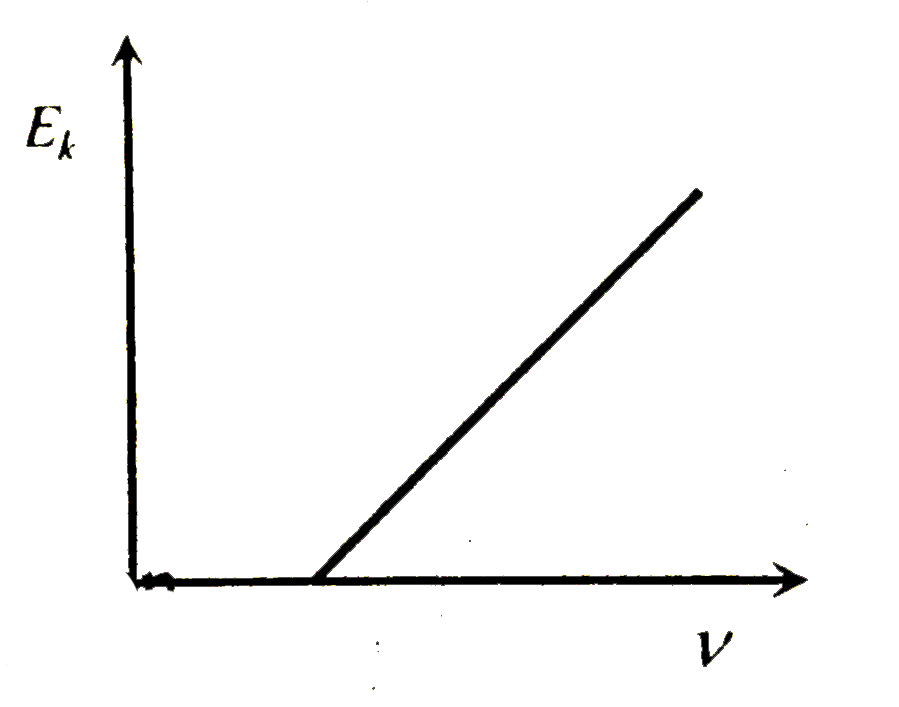Statement-1 : In photoelectric effect, the number of photoelectrons emitted is always equal to number of photons incident.
and
Statement-2 : All the photons fallin on the surface will eject photoelctron, is not necessary.
Statement-1 is True, Statement-2 is True, Statement-2 is a correct explanation for Statement-10
Statement-1 is True, Statement-2 is True, Statement-2 is NOT a correct explanation for Statement-10
Statement-1 is True, Statement-2 is False.
Statement-1 is False, Statement-2 is True.
The correct Answer is:D
To solve the question regarding the statements about the photoelectric effect, let's analyze each statement step by step.
Step 1: Analyze Statement 1
Statement 1: In the photoelectric effect, the number of photoelectrons emitted is always equal to the number of photons incident.
Explanation:
- The photoelectric effect states that when light (photons) hits a metal surface, it can eject electrons (photoelectrons) if the energy of the photons is above a certain threshold (the work function of the metal).
- However, not every photon will necessarily cause the emission of a photoelectron. Only those photons with energy greater than the work function will eject electrons. Therefore, the number of emitted photoelectrons can be less than the number of incident photons.
Conclusion for Statement 1: This statement is false.
Step 2: Analyze Statement 2
Statement 2: All the photons falling on the surface will eject photoelectrons, is not necessary.
Explanation:
- This statement correctly reflects the nature of the photoelectric effect. Not all photons will have enough energy to overcome the work function of the metal. Only those photons with energy greater than the threshold energy will eject photoelectrons.
- Therefore, it is indeed not necessary that all incident photons will lead to the emission of photoelectrons.
Conclusion for Statement 2: This statement is true.
Step 3: Determine the Relationship Between the Statements
Now we need to check if Statement 2 provides a correct explanation for Statement 1.
- Since Statement 1 is false (the number of emitted photoelectrons is not always equal to the number of incident photons), Statement 2 cannot be considered a correct explanation for Statement 1.
Final Conclusion
- Statement 1: False
- Statement 2: True
- Statement 2 does not explain Statement 1.
Thus, the correct answer is that Statement 1 is false and Statement 2 is true.
Statement 1: In the photoelectric effect, the number of photoelectrons emitted is always equal to the number of photons incident.
- The photoelectric effect states that when light (photons) hits a metal surface, it can eject electrons (photoelectrons) if the energy of the photons is above a certain threshold (the work function of the metal).
- However, not every photon will necessarily cause the emission of a photoelectron. Only those photons with energy greater than the work function will eject electrons. Therefore, the number of emitted photoelectrons can be less than the number of incident photons.
Statement 2: All the photons falling on the surface will eject photoelectrons, is not necessary.
- This statement correctly reflects the nature of the photoelectric effect. Not all photons will have enough energy to overcome the work function of the metal. Only those photons with energy greater than the threshold energy will eject photoelectrons.
- Therefore, it is indeed not necessary that all incident photons will lead to the emission of photoelectrons.
Now we need to check if Statement 2 provides a correct explanation for Statement 1.
- Statement 1: False
- Statement 2: True
- Statement 2 does not explain Statement 1.
Topper's Solved these Questions
- SIMPLE HARMONIC MOTIONBOOK - ALLENCHAPTER - SIMPLE HARMONIC MOTIONEXERCISE - Exercise - 19
2 Videos
- SIMPLE HARMONIC MOTIONBOOK - ALLENCHAPTER - SIMPLE HARMONIC MOTIONEXERCISE - Exercise - 20
2 Videos
- SIMPLE HARMONIC MOTIONBOOK - ALLENCHAPTER - SIMPLE HARMONIC MOTIONEXERCISE - Exercise - 17
2 Videos
- RACEBOOK - ALLENCHAPTER - RACEEXERCISE - Basic Maths (Wave Motion & Dopplers Effect) (Stationary waves & doppler effect, beats)
25 Videos
- TEST PAPERBOOK - ALLENCHAPTER - TEST PAPEREXERCISE - PHYSICS
4 Videos
Similar Questions
Knowledge Check
In photoelectric effect, the number of photoelectrons emitted is proportional to :
Aintensity of incident beamBfrequency of incident beamCwavelength of incident beamDall of theseIn photoelectric effect, to eject four photoelectrons, minimum number of photons required is
A1B2C4D6Statement-1 : In a photoelectric effect experiment different photoelectron have different kinetic energy.
and
Statement-2 : In the incident radiation different photons must have different energy.AStatement-1 is True, Statement-2 is True, Statement-2 is a correct explanation for Statement-9BStatement-1 is True, Statement-2 is True, Statement-2 is NOT a correct explanation for Statement-9CStatement-1 is True, Statement-2 is False.DStatement-1 is False, Statement-2 is True.
Statement-1: In Photoelectric effect , electrons absorbing the photon can not be a free electron.
Statement -2: A free electron can't absorb a photon completely
View SolutionThe ratio of number of photoelectrons ejected to the number of the photons falling on a metal surface is..........than.......... .
View SolutionThe factor on which the number of photoelectrons emitted per unit time depends in the photoelectric effect is:
View SolutionStatement-1: Kinetic energy of photoelectrons increases with increases in the frequency of incident radiation
Statement-2: The number of photoelectrons ejected increases with increases in intensity of incident radiation.
View SolutionFor the photoelectric effect, the maximum kinetic energy Ek of the emitted photoelectrons is plotted against the frequency ν of the incident photons as shown in the figure. The slope of the curve gives

View Solution
